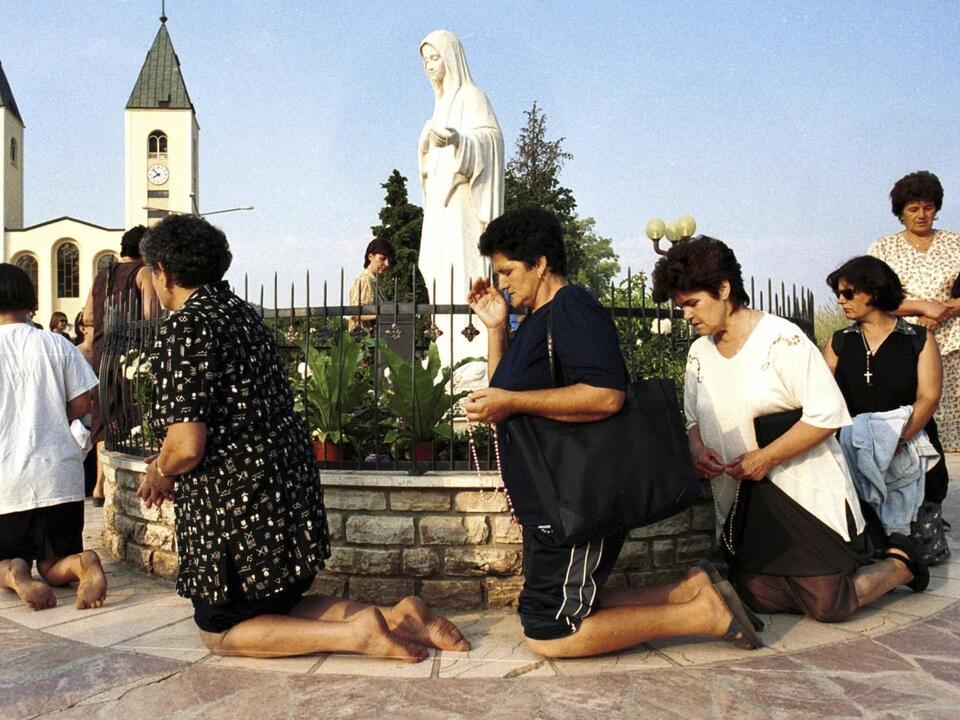Physical Address
304 North Cardinal St.
Dorchester Center, MA 02124
Physical Address
304 North Cardinal St.
Dorchester Center, MA 02124

VATICAN CITY — The Vatican is set to release its long-awaited assessment regarding a contentious aspect of Roman Catholicism: the reported appearances of the Virgin Mary in the village of Medjugorje, Bosnia. This announcement follows nearly 15 years of investigation into what the Vatican has termed “the spiritual experience of Medjugorje.”
The saga began in 1981 when six children and teenagers claimed to have witnessed visions of the Madonna on a hill in the otherwise unremarkable village. Since that time, some of these “seers” assert that they have experienced daily visits from Mary, sharing messages that they believe have spiritual significance.
As a result, Medjugorje has transformed into a significant pilgrimage site for Christians, drawing millions of visitors over the years. In the latest statistics, around 1.7 million Eucharistic wafers were distributed at Masses there last year, which offers an estimation of the Catholic pilgrimages to the region.
Despite its popularity, the Vatican has not officially validated the alleged apparitions, unlike established sites like Fatima in Portugal or Lourdes in France. Over the years, both local bishops and Vatican officials have expressed skepticism regarding the authenticity of the claims made by the seers, raising concerns that financial motives might be influencing their reports of ongoing visions.
The rise in religious tourism has significantly impacted the local economy, with a variety of businesses such as hotels, family-run accommodations, and even sports complexes emerging around Medjugorje. This development has been vital for the region’s recovery, particularly after the devastation caused by the Bosnian war in the 1990s.
This complex backdrop has fueled speculation about the Vatican’s announcement, leading journalists to closely examine the phrasing used in its communication. Notably, the Vatican referred to “the spiritual experience of Medjugorje,” avoiding terms like “apparitions” or “visions” in their briefing notice.
In a strategic move back in 2010, Pope Benedict XVI established an international commission comprising theologians and bishops to investigate the claims of the apparitions thoroughly. Cardinal Camillo Ruini, the vicar of Rome at the time, was appointed to lead the inquiry. By 2013 or early 2014, Pope Francis had reviewed the commission’s findings.
Francis hinted at his doubts regarding the ongoing apparitions, distinguishing between the original reported visions from 1981 and the alleged ongoing experiences. “I prefer Our Lady to be a mother, our mother, and not a telegraph operator who sends out a message every day at a certain time,” he remarked, reflecting his concerns over the credibility of the claims.
Nevertheless, during a press conference while returning from Fatima, he acknowledged that many pilgrims are spiritually transformed through their visits to Medjugorje: “This isn’t a magic wand. You can’t deny this spiritual and pastoral fact,” he stated.
To address the site’s needs and the interests of the faithful, Pope Francis appointed two envoys for the shrine and allowed official church pilgrimages in 2019. However, he clarified that this decision did not equate to a formal validation of the reported apparitions.
Given the recent developments, whatever the Vatican announces is unlikely to be a straightforward affirmation of the Medjugorje phenomena’s authenticity. Earlier this year, Fernández stated that the Vatican would no longer issue declarations about the validity of such visions unless they were definitively proven to be hoaxes.
Instead, a new framework for evaluating alleged spiritual occurrences was introduced, designed to protect the faithful from individuals seeking to profit from their beliefs. This framework sets out various potential outcomes, with the most favorable being a noncommittal declaration, a “nihil obstat,” which indicates that nothing about the event contradicts the Catholic faith.
No matter the outcome of the Vatican’s announcement, it will have implications for the Medjugorje community. The local municipality, with a population of around 18,000, recognizes tourism as crucial to its economic development, largely driven by Medjugorje. The area hosts numerous festivals and gatherings organized by Christian humanitarian groups, contributing to its cultural and spiritual richness.
With many pilgrims potentially choosing Medjugorje over other destinations due to ongoing conflicts elsewhere, 2024 could see a record influx of visitors. “Medjugorje means a lot; all economic sectors lean on Medjugorje,” observed Ante Kozina, head of the local tourism association. “It is a growth generator for the entire municipality.”
Source: AP



